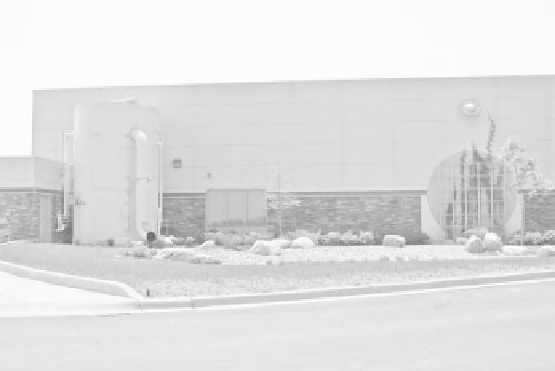Environmental Engineering Reference
In-Depth Information
Figure 7-28
Rooftop runoff capture system.
are available in a wide range of capacities, for above- or below-grade installation,
depending on local climate and potential for freezing conditions.
Internal storage is also possible if the roof drain system uses scuppers and
internal storage space is available. Large commercial or industrial structures are
most likely to include this type of roof drainage and accommodate storage units
within the structure. If only external storage is available, heating elements can be
used to prevent cold weather problems. For storage structures with public water
augmentation, a backflow prevention valve is required on the public service. All
reuse systems must be pressurized for internal distribution, 30- to 50-psi gage. A
major consideration when designing capture-reuse systems is the quality of the
water to be used.
The recent demonstration site at the San Diego County Operations Center
in Kearney Mesa included the opportunity to collect and analyze four samples
of runoff from the roof of the large warehouse building adjacent to the porous
pavement installation (Figure 7-29). The chemistry of that rainfall runoff is shown
in Table 7-3 and includes comparison with two relevant drinking water standards;
the San Diego County Source Water Protection Guidelines (SWPG, 2004), which
apply to the protection of water quality in the regional reservoir system as “raw”
water sources, and the federal EPA drinking water standards for potable supply.
Although hardly a comprehensive data set for regional decision making with
respect to the application of this LID technology, it does provide an interesting
“snapshot” of the potential chemistry of rainfall discharging from a relatively old
roof material in the region. Other rooftop chemical sampling [25, 26] from other
parts of the United States offers additional insight into the issue and suggests that
local conditions, such as fossil fuel sources in the atmosphere and the proximity of
major highways, can introduce a number of trace metals and other chemicals into
the rainfall that might prove of concern if the flow is not filtered and disinfected.












Search WWH ::

Custom Search